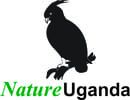Conservation & Development
- Home
- Conservation & Development
We work across these areas
Most Important Biodiversity Areas (IBAs) in Uganda are faced with complex challenges that range from unsustainable resource use practices to high poverty levels, which inevitably lead to habitat degradation and biodiversity loss. Addressing these challenges necessitates robust approaches that aim at promoting biodiversity conservation while at the same time addressing sustainable livelihoods in the affected areas.
For over 20 years, NatureUganda has implemented conservation projects based on priority species, sites and habitats with people because it recognizes their custodianship role and indigenous knowledge.
Over the years, the main focus of our project portfolio has been the conservation of priority species (species threatened with extinction, endemic or restricted range), and priority sites (sites critical for the survival of key species such as endemic species, migratory species, economically important species for say tourism, crop production, etc). These sites include national parks or forest reserves, Important Bird Areas, Key Biodiversity areas, wetland areas including Ramsar sites and critical sites for socio-economic development such as water catchment areas.
NU has been implementing the Important Bird Areas programme since 1995 (Byaruhanga et al. 2001), a world-wide programme coordinated by BirdLife International. The IBA programme aims at identifying a network of sites crucial for biodiversity conservation using birds as surrogates. To date, thirty-four (34) areas have been identified in Uganda including wetlands (Ramsar Sites), forests (Forest Reserves) and National Parks and Wildlife Reserves important for bird conservation. Subsequently, a directory “Important Bird Areas in Uganda” was published in 2001. Up-to-date information on all IBAs in Uganda can be accessed through the World Biodiversity DataBase (WBDB).





